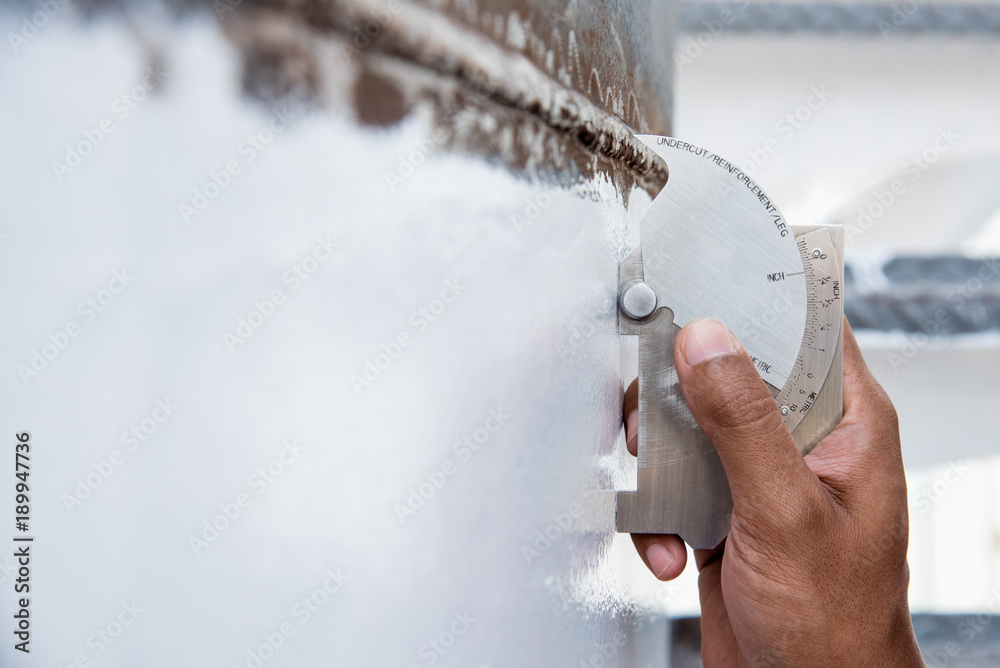Ideal Practices for Effective Tank Welding Inspection Processes
The Necessary Role of Container Welding Examination in Ensuring Structural Stability and Safety And Security Compliance in Industrial Applications
In the world of industrial applications, storage tank welding inspection emerges as a critical aspect in protecting architectural honesty and guaranteeing conformity with safety and security laws. Making use of a combination of methods such as visual assessments and advanced testing techniques, these examinations offer to identify and minimize potential flaws prior to they rise into significant risks.
Significance of Container Welding Assessment

Guaranteeing conformity with sector requirements and guidelines is one more considerable aspect of storage tank welding examination. Regulatory bodies mandate rigorous guidelines for the building and maintenance of storage containers, and comprehensive inspections assist companies abide by these demands. Non-compliance can lead to serious charges, including penalties and shutdowns, better stressing the need for extensive assessment procedures.
In addition, container welding assessment plays a vital role in maintaining functional effectiveness. In summary, the importance of container welding assessment exists in its capability to guard public health and wellness, protect the environment, and make certain conformity with governing structures.
Key Inspection Methods
Reliable container welding assessment depends on a selection of crucial techniques that guarantee detailed examination of weld quality and structural integrity. Among the most common strategies are visual evaluation, ultrasonic screening, radiographic screening, and magnetic particle screening - Tank Welding Inspection. Each approach offers special benefits in assessing various aspects of the weld
Aesthetic assessment acts as the initial line of defense, permitting inspectors to determine surface flaws, irregularities, or inconsistencies in the weld bead. Ultrasonic screening utilizes high-frequency acoustic waves to identify inner imperfections, such as splits or spaces, giving a thorough analysis of weld integrity. This technique is specifically effective in spotting concerns that might not show up on the surface.
Radiographic testing makes use of X-rays or gamma rays to generate pictures of the welds, disclosing inner interruptions and giving an irreversible record for future referral. This technique is highly reliable for critical applications where the risk of failure should be lessened.
Lastly, magnetic bit screening is used to recognize surface and near-surface issues in ferromagnetic materials. By using electromagnetic fields and fine iron bits, inspectors can identify suspensions that could compromise the structural integrity of the tank. Together, these techniques create a robust structure for ensuring top notch welds in commercial applications.
Conformity With Safety And Security Standards

Routine examinations play a critical function in making certain conformity by recognizing potential failures or discrepancies from prescribed standards. Assessors are trained to evaluate weld top quality, confirm material requirements, and assess the total architectural honesty of storage tanks. here Their know-how is vital in making sure that welding processes meet the required safety and security requirements.
In addition, compliance with security requirements not just protects workers yet also safeguards the atmosphere from possible dangers such as leaks or catastrophic failures. Organizations that focus on safety conformity are better placed to mitigate dangers, enhance functional effectiveness, and foster a culture of safety within their labor force. In summary, keeping rigorous compliance with security standards is important for the effective procedure of storage tank welding tasks in commercial setups.
Advantages of Routine Examinations
Normal assessments are integral to keeping the structural honesty and security of bonded tanks. These examinations supply a systematic approach to determining prospective problems or weak points in the welds, guaranteeing that any problems are attended to prior to they intensify into substantial failings. By performing regular analyses, companies can detect deterioration, exhaustion, and other kinds of wear and tear that may compromise container efficiency.
Furthermore, consistent inspections contribute to compliance with market laws and criteria. Following these guidelines not only alleviates legal threats but also enhances the company's this content credibility for safety and security and dependability. Routine inspections foster a positive safety culture, urging employees to identify and focus on the value of tools honesty.

Study and Real-World Applications
Study and real-world applications illustrate the concrete influence of reliable tank welding examination techniques. One notable instance is a big petrochemical center that faced significant operational disruptions as a result of leaks in storage containers. Complying with the execution of rigorous welding evaluation procedures, including visual and ultrasonic testing, the facility determined essential imperfections in weld joints that can have led to disastrous failings. This positive approach not just avoided ecological hazards but additionally conserved the business millions in possible cleaning costs and regulatory fines.
Similarly, a water treatment plant executed a detailed evaluation program for its tank welding operations - Tank Welding Inspection. By including non-destructive testing approaches, the plant had the ability to identify early signs of rust and tiredness in weld joints. This timely treatment prolonged the lifespan of the containers and ensured compliance with safety and security regulations, hence guarding public health and wellness
These study highlight the value of normal and organized container welding inspections. By focusing on these techniques, industries can mitigate risks, enhance architectural integrity, and ensure compliance with safety criteria, eventually leading to improved operational efficiency and minimized obligations.

Final Thought
In verdict, storage tank welding evaluation is a crucial element of preserving structural honesty and security in commercial applications. Utilizing various assessment methods makes certain early detection of possible problems, thus avoiding tragic failures.